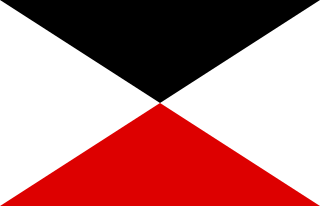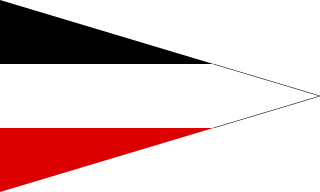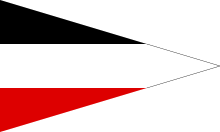The 4th Guards Infantry Division was a unit of the Imperial German Army in World War I. The division was formed on May 18, 1915. It was part of a wave of new infantry divisions formed in the spring of 1915. The division was disbanded in 1919 during the demobilization of the German Army after World War I. It was a division of the Prussian Guards and hence recruited from all over the Kingdom of Prussia.

The III Army Corps / III AK was a corps level command of the Prussian and then the Imperial German Armies from the 19th century to World War I.

The Guards Cavalry Division (Garde-Kavallerie-Division) was a unit of the Prussian Army that was stationed in Berlin. The division was a part of the Guards Corps (Gardekorps).
The 1st Division was a unit of the Prussian/German Army. It was formed in Königsberg in March 1816 as a Troop Brigade (Truppen-Brigade). It became the 1st Division on September 5, 1818. From the corps' formation in 1820, the division was subordinated in peacetime to I Army Corps. The 1st Division was disbanded in 1919, during the demobilization of the German Army after World War I.
The 2nd Division was a unit of the Prussian/German Army. It was formed in Danzig in March 1816 as a Troop Brigade (Truppen-Brigade). It became the 2nd Division on September 5, 1818. In 1890, the headquarters of the division was relocated to Königsberg, then the capital of East Prussia. In 1899, the headquarters was moved to Insterburg, further inland and closer to the border with the Russian Empire. From the latter's formation in 1820, the division was subordinated in peacetime to the I Army Corps. The 2nd Division was disbanded in 1919 during the demobilization of the German Army after World War I.

The XX Army Corps / XX AK was a corps level command of the German Army before and during World War I.
The 3rd Guards Infantry Division was a unit of the German Army, in World War I. The division was formed on the mobilization of the German Army in August 1914 as part of the Guards Reserve Corps. The division was disbanded in 1919, during the demobilization of the German Army after World War I. It was a division of the Prussian Guards and was thus raised and recruited throughout the Kingdom of Prussia from the elite of recruits.
The 4th Ersatz Division was a unit of the German Army, in World War I. The division was formed on mobilization of the German Army in August 1914. The division was disbanded in 1919, during the demobilization of the German Army after World War I.

The 10th Ersatz Division was a unit of the German Army, in World War I. The division was formed on the mobilization of the German Army in August 1914. The division was disbanded in 1919 during the demobilization of the German Army after World War I.
The 19th Ersatz Division was a unit of the German Army, in World War I. The division was formed on the mobilization of the German Army in August 1914. The division was disbanded in 1919, during the demobilization of the German Army after World War I.

The I Army Corps / I AK was a corps level command of the Prussian and then the Imperial German Armies from the 19th Century to World War I.

The 2nd Cavalry Division was a unit of the German Army in World War I. The division was formed on the mobilization of the German Army in August 1914. The division was disbanded in 1919 during the demobilization of the German Army after World War I.

The 5th Cavalry Division was a unit of the German Army in World War I. The division was formed on the mobilization of the German Army in August 1914. The division was dissolved in February 1918.

The 9th Cavalry Division was a unit of the German Army in World War I. The division was formed on the mobilization of the German Army in August 1914. The division was dissolved in March 1918.

The Bavarian Cavalry Division was a unit of the Royal Bavarian Army, part of the German Army, in World War I. The division was formed on the mobilization of the German Army in August 1914. The division was disbanded in 1919, during the demobilization of the German Army after World War I. The division was raised and recruited in Bavaria.

The 7th Cavalry Division was a unit of the German Army in World War I. The division was formed on the mobilization of the German Army in August 1914. The division was disbanded in 1919 during the demobilization of the German Army after World War I.

The 6th Cavalry Division was a unit of the German Army that fought on Eastern and Western Fronts during World War I. The division was formed on the mobilization of the German Army in August 1914 and was disbanded in 1919 during the demobilization of the German Army after World War I.

The 4th Cavalry Division was a unit of the German Army in World War I. The division was formed on the mobilization of the German Army in August 1914. The division was disbanded in 1919 during the demobilization of the German Army after World War I.
The history of the German Cavalry in World War I is one of an arm in decline.

The XI Army Corps / XI AK was a corps level command of the Prussian and German Armies before and during World War I.



